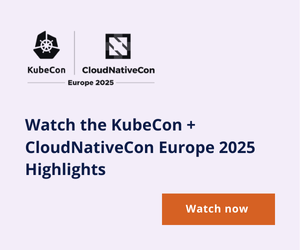Infrastructure-as-Code (IaC) has carved a place in the tech world. IaC has revolutionized the way enterprises build and scale cloud environments. IaC allows teams to define, provision, and manage infrastructure using machine-readable configuration files. Developers use tools like HashiCorp Terraform and Pulumi for cloud deployment as they are more reliable and repeatable.
As organizations embrace multi-cloud architectures, governance has started to become a challenge. Simple automation of infrastructure provisioning is not enough. Enterprises must ensure compliance with internal policies, industry regulations, and security best practices, at scale, across AWS, Azure, Google Cloud, and hybrid platforms. This is where Policy-as-Code (PaC) comes into play. Tools like Open Policy Agent (OPA) and Cerbos are leveraged to enforce guardrails in real-time.
The transition from IaC to PaC is not about replacing one with the other; instead, it’s about layering governance into the automation fabric. Together, IaC and PaC are redefining how enterprises achieve secure, compliant, and scalable multi-cloud operations.
Why multi-cloud demands Policy-as-Code
While multi-cloud environments bring flexibility and resilience, they also have various governance challenges:
- Inconsistent security controls: Each cloud provider has different IAM models, compliance templates, and monitoring tools
- Regulatory complexity: Enterprises often operate under frameworks like GDPR, HIPAA, SOX, PCI-DSS, or FedRAMP, each requiring fine-grained enforcement
- Developer autonomy vs. compliance: DevOps teams want speed, while compliance officers want control; PaC enables both
- Dynamic environments: Cloud resources can be spun up in seconds, and misconfigurations (like open S3 buckets or over-permissive IAM roles) create instant risks
Consequently, traditional compliance methods lack the ability to keep up with with this speed and scale. To that end, Policy-as-Code offers a solution by making governance programmable, testable, and automatable.
The role of Infrastructure-as-Code in multi-cloud governance
HashiCorp Terraform
Terraform is considered the gold standard for IaC in multi-cloud environments. They offer a declarative model that allows enterprises to consistently define infrastructure across AWS, Azure, GCP, and on-premises environments. Their key governance capabilities include:
- Provider-agnostic configurations for standardization
- Terraform Cloud/Enterprise Sentinel Policies for compliance enforcement at plan and apply stages
- State management for traceability and audits
Although Terraform is used to implement infrastructure consistency, governance rules must often be codified outside Terraform’s native scope. This is where Policy-as-Code comes into play.
Pulumi
Pulumi takes a different approach by allowing developers to write IaC in general-purpose languages like TypeScript, Python, Go, and C#. This makes it easier to integrate governance into development workflows. Pulumi also offers CrossGuard policies, which embed compliance checks directly into IaC pipelines.
For example, teams can write a Pulumi policy that ensures:
- All storage buckets must have encryption enabled
- No VM instance can be provisioned without tagging for cost attribution
- Network security groups cannot expose SSH to the public internet
Pulumi’s developer-centric model makes it a natural bridge between IaC and PaC.
The rise of Policy-as-Code
Open Policy Agent (OPA)
OPA is an open-source, general-purpose policy engine designed for cloud-native environments. OPA has a declarative Rego language that can define and enforce fine-grained rules across infrastructure, Kubernetes clusters, microservices, and APIs.
Examples of OPA use cases in multi-cloud governance:
- Kubernetes admission control such as rejecting pods without resource limits
- Terraform plan validation, including blocking deployments of unapproved instance types
- Service mesh authorization by enforcing zero-trust policies in Istio or Linkerd
OPA’s strength lies in its flexibility. It can be embedded into CI/CD pipelines, Kubernetes, or API gateways, ensuring governance is enforced before, during, and after deployment.
Cerbos
Although OPA is broad, Cerbos focuses specifically on authorization. Cebros offers a stateless, language-agnostic authorization layer. Developers define policies in YAML and applications query Cerbos to check permissions in real time.
In a multi-cloud governance context, Cerbos enables:
- Fine-grained access control that allows only authorized identities, human or machine, to access sensitive workloads
- Separation of concerns removed by keeping authorization logic out of application code for better maintainability
- Zero-trust enforcement by validating every request based on identity, resource, and context
This is particularly valuable in environments with non-human identities (NHIs) like service accounts, API tokens, and workloads. Cerbos ensures governance extends beyond human users to every entity interacting within a multi-cloud ecosystem.
Benefits of automating governance with PaC
Automating governance through Policy-as-Code transforms compliance from a manual, reactive process into a proactive, scalable capability has several capabilities:
- Organizations can consistently enforce the same standards by codifying policies across AWS, Azure, and GCP, thus eliminating the risks of configuration drift or uneven guardrails.
- Automation also scales effortlessly with infrastructure growth, ensuring that as new resources are deployed, governance remains intact without requiring additional overhead from security teams.
- Policies stored as code are version-controlled, testable, and fully traceable, making it easier to demonstrate compliance during audits.
- Developers also benefit from this automation because they can work within predefined guardrails that prevent violations early in the process, avoiding last-minute compliance bottlenecks.
The result is a balance between agility and control: faster releases, stronger security postures, and reduced risk of misconfigurations or compliance breaches.
Challenges and considerations
While a combined IaC and PaC approach has its benefits, it also comes with its own set of challenges. There is a steep learning curve when working with tools like OPA’s Rego language or even while defining YAML-based authorization rules in Cerbos.
Then there is the cultural adjustment. Some organizations face trust struggle while moving away from manual approvals to fully automated guardrails demands that needs buy-in from security, compliance, and DevOps stakeholders.
On the other hand, integration can also become a challenge as policies must be consistently applied across diverse pipelines, cloud providers, and runtime environments. During implementation,potential performance trade-offs such as OPA sidecars in Kubernetes must also be considered.
Improper governance can also result in “policy sprawl,” where overlapping or redundant rules result in confusion and reduce development speed rather than enabling it. To overcome these challenges, organizations must invest in technical yet thoughtful approach to change management, integration strategy, and performance tuning.
The future: Governance-as-Code in the cloud-native era
The trajectory from IaC to PaC is evolving into Governance-as-Code (GaC), where compliance, risk, and security policies are codified, automated, and integrated into every stage of the cloud lifecycle.
Key trends shaping the future include:
- AI-driven policy recommendations to detect risky patterns and suggest guardrails
- Cross-cloud policy federation across AWS, Azure, GCP, and private clouds
- Integration with FinOps to ensure cost optimization and sustainability
- Zero-trust by default to every API call and workload interaction
Tools like Terraform, Pulumi, OPA, and Cerbos are expected to converge to create an end-to-end governance automation, thus ensuring enterprises are able to scale multi-cloud operations securely and confidently.
Conclusion
The move from Infrastructure-as-Code to Policy-as-Code is the next logical step in cloud-native evolution. While IaC tools like Terraform and Pulumi automate infrastructure provisioning, PaC solutions like OPA and Cerbos enforce compliance, security, and governance at scale.
As enterprises juggle multiple clouds, regulations, and identities, codifying governance as become an integral component. Organizations can unlock the agility of cloud by embracing IaC and PaC together while staying firmly within the guardrails of compliance.
The result? Faster innovation, stronger security, and governance that scales as seamlessly as the infrastructure it protects.






